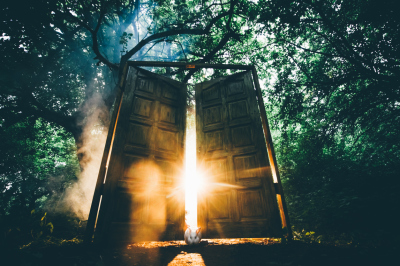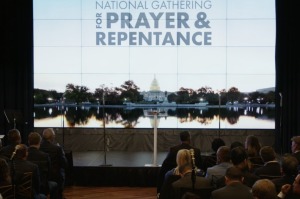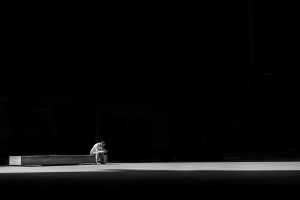Secular spirituality grows among educated. Is this revival?

According to a recent report from statistician Ryan Burge, the belief in miracles has risen in recent years among the college-educated, the group most correlated with materialistic beliefs. In 1991, just 45% of Americans with a bachelor’s degree said they “definitely believe” in miracles. However, according to the U.S. government’s General Social Survey, that number climbed to 63% by 2018. The change was even more dramatic among those with graduate-level degrees. In 1991, a mere 30% of those with at least a master’s degree believed in miracles. By 2018, that number had jumped to 61%.
Apparently, education is no longer the de-supernaturalizing influence it once was. In fact, those with higher education are as likely to believe in miracles as those without higher education. However, these surprising numbers are part of the larger story of Western secular society.
The standard prediction about the West has been that the growth and expansion of technology would continue to make us more secular and that more secular would mean less belief in God and the supernatural. But, the percentage of atheists and agnostics in America has hardly budged, even among the group Burge refers to as the “non-religious.” Even the so-called “Great de-Churching” has not been a mass conversion to atheism, but rather an explosion of what sociologists call “nones,” people with no religion in particular.
Making sense of this apparent contradiction requires rethinking what it means to be “secular.” For example, just as rejecting religion is not the same as rejecting the supernatural, so an increased openness to the supernatural should not be equated with religious revival. New York Times columnist Ross Douthat has suggested that the softening toward “signs and wonders” among college-educated Americans may simply reflect “the general resilience of supernaturalism.” This is not the same thing as embracing faith, Christian or otherwise. Put differently, there is such a thing as a secular spirituality, and that may be what we are seeing today.
In the middle of the 20th century, the eminent sociologist Peter Berger proposed the “secularization thesis.” He speculated that as societies advanced into the modern, scientific age, religion would lose its grip on people. In its place would be a secularism that, among other things, was marked by a rejection of anything supernatural.
Decades later, Berger renounced this thesis, recognizing the resilience of religion. For example, the world had become more religious, not less. Christianity is projected to number 2.7 billion or 33.8% of the world’s population soon, while atheism and the non-religious are declining as a percentage of world population.
In this sense, the West is an outlier. However, it’s not clear that Berger’s self-rejected thesis was wrong. More than 25 years ago, another observer argued that the form of secularism overtaking our society wasn’t Dawkins-style materialism. Rather, it was the tendency to think about the world and to live not as if God does not exist, but as if He were largely irrelevant. In his book The Way of the Modern World, Dr. Craig Gay suggested that our modern, consumeristic and, yes, secular world elevated convenience, control, and choice above all other values. Thus, we may still “believe” in God and want spirituality, but our approach mimics shopping or eating at a buffet, in which we pick and choose what we like rather than relying on the authority of Scriptures, traditions, or creeds.
In this view, the West is as deeply secular about spirituality as about technology, politics, or anything else. An example is the disturbing video that recently went viral which portrayed white-collar Americans on an ayahuasca retreat in Central America. Spiritual tourism is big business, and these tourists, sitting in the dirt violently vomiting from hallucinogenic drugs while local guides wiped their chins, were willing to pay for their manufactured “miracle.”
The growth of spiritual secularism, or secular spiritualism, does not disprove the secularization thesis, but it does reframe it. To be clear, the understanding of spirituality that has emerged in the West is as far from Christian as the non-spirituality that was predicted. The mixing and matching approach suits customers who believe they are in charge, and that the right techniques will give them the convenience, control, and choice Gay described, even beyond the physical world.
Some, including higher profile former secularists, are by God’s grace finding the One who is the Truth and actually in charge of the universe. Others are finding themselves, in this increasingly popular marketplace of secular spirituality, deep in pagan darkness, subjected to forces they can’t possibly understand, let alone command. Which is why the increased openness to miracles among educated Americans is mixed news.
Secular spirituality is far from revival. Christians know of these other forces capable of counterfeit “miracles” but that lead away from the Way, the Truth, and the Life. This should cause us to cry out for mercy for those who are being deceived.
Originally published at BreakPoint.
John Stonestreet serves as president of the Colson Center for Christian Worldview. He’s a sought-after author and speaker on areas of faith and culture, theology, worldview, education and apologetics.
Shane Morris is a senior writer at the Colson Center, where he has been the resident Calvinist and millennial, home-school grad since 2010, and an intern under Chuck Colson. He writes BreakPoint commentaries and columns. Shane has also written for The Federalist, The Christian Post, and Summit Ministries, and he blogs regularly for Patheos Evangelical as Troubler of Israel.




























